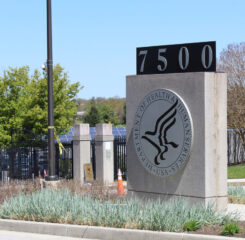New EHR Adoption Data from SNFs and Small Critical Access Hospitals Released
Recent data from the Office of the National Coordinator of Health Information Technology (ONC) found that a majority (64%) of skilled nursing facilities (SNFs) used an electronic health record (EHR) in 2016. This is the first time nationally representative data has been released since the 2004 National Nursing Home data that LeadingAge analyzed and published in 2009.
The new study found that adoption rates in not-for-profit homes were higher (70%) than in their for-profit peers (62%) at a statistically significant level, as in previous data from the 2009 study and other long-term and post-acute care (LTPAC) sector studies, which is still lower than the 80% EHR adoption rate found among the largest not-for-profit LeadingAge members.
Almost one in five SNFs (18%) also used a state or regional health information exchange entity, 30% electronically exchanged (sent and/or received) key clinical information, and 62% had information available to them from external sources, according to this latest data brief.
“It was surprising to see that smaller (<50 beds) and rural SNFs had somewhat higher adoption rates, at 68% and 67% respectively compared to 62% in both their larger (>100 beds) and urban counterparts, though the differences were not statistically significant,” said LeadingAge Senior Vice President for Technology and CAST Executive Director Majd Alwan. “Most previous studies, in SNFs as well as other LTPAC settings, have shown lower EHR adoption rates among smaller as well as rural providers; it’s worth exploring an explanation for this departure,” he added.
Another recent study has found that critical-access hospitals are falling behind other hospitals in their use of EHR functions. This gap is similar to what is happening in LTPAC. Findings from LeadingAge CAST and Ziegler released in July 2017 revealed that larger LTPAC nonprofit organizations are leading their smaller peers in EHR adoption and EHR sophistication, advanced functionalities, and health information exchange capabilities. That research had asked members of the LeadingAge Ziegler 150, the largest nonprofit senior living systems in the United States, to classify the sophistication of their current EHRs using CAST’s 7-Stage EHR Adoption Model.
In August, the Journal of the American Medical Informatics Association (JAMIA) published research showing a digital divide in EHR sophistication between large hospitals and critical access hospitals. The smaller hospitals were less likely to have adopted at least eight performance measurement functions and at least eight patient engagement functions.
The study findings indicate that 80% of hospitals adopted at least a basic EHR system, a 5.3 percentage point increase from 2014. However, only 37% of hospitals adopted at least eight of 10 EHR data for performance measurement functions, and 42% adopted at least eight of 10 patient engagement functions.
In LTPAC, of 117 respondents and LZ 150 members, nearly 30% are in the upper tiers of EHR adoption (Stages 6 and 7, at 12% and 17.9% respectively), compared to only 23% of LTPAC providers in general (Stages 6 and 7, at 18.09% and 5.24% respectively).
Similarly, approximately 20% of LTPAC providers are in the lower, less-sophisticated stages of adoption (Stages 1 and 2, at 6.25% percent and 14.10% percent respectively), compared to just about 4% among LZ 150 members (Stages 1 and 2, at 1.7% and 2.6% respectively).

 Shutdown Week Three: Impact of Ongoing Closure on Affordable Housing
Shutdown Week Three: Impact of Ongoing Closure on Affordable Housing


